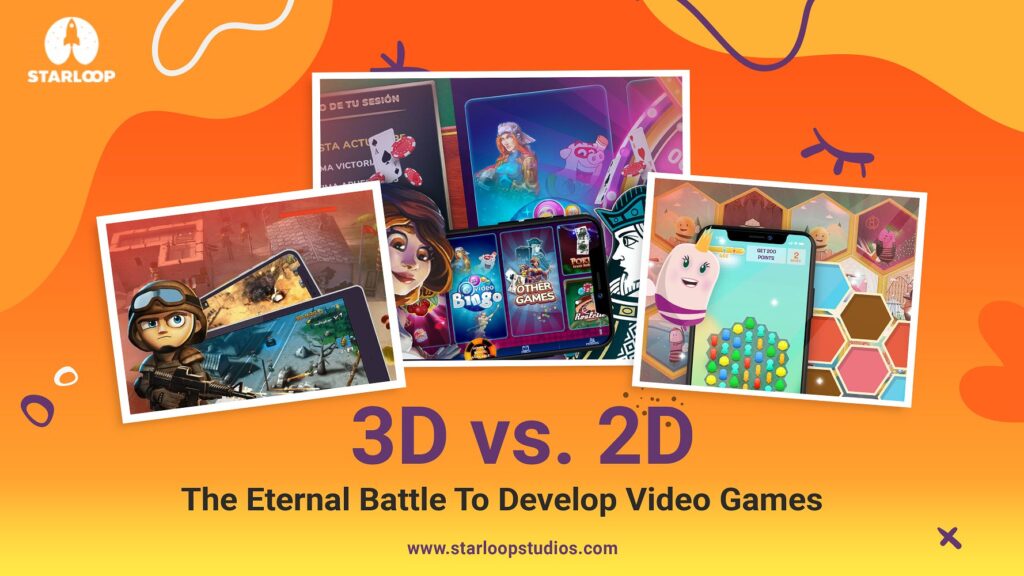Creating graphics for video games involves both technical and creative skills. 2D graphics use sprites to create a single image, and the process begins with a concept or design that is transferred to a sprite sheet. Animations are created by displaying a collection of images in quick succession. 3D graphics are created by modeling, texturing, lighting, and animating 3D objects using software like Blender or Autodesk Maya. New technologies like ray tracing and AI have improved the ability to create more realistic graphics, and game engines like Unity and Unreal Engine optimize performance and memory usage. Evolving technologies improve the ability to create visually rich and immersive environments in video games.
The Art of Creating 2D and 3D Graphics in Video Games
Video games are a form of entertainment that has gained tremendous popularity in recent years. In these games, players take on the role of a character and navigate through different worlds or environments to complete various tasks or missions. One of the essential components of video games is the graphics rendered to make the game look visually appealing and realistic. The development of 2D and 3D graphics is an art form that requires both technical and creative skills, and in this article, we’ll go over what goes into creating those graphics.
2D Graphics in Video Games
The term 2D, or two-dimensional graphics, refers to images that are drawn on a flat surface, like a piece of paper or a computer screen. In video games, 2D graphics use sprites, which are images or animations that are overlaid on one another to create a single image. These sprites can be moved, rotated, or scaled to create dynamic gameplay.
The process of creating 2D graphics for video games begins with a concept or design. This design is then drawn using software like Adobe Illustrator or CorelDRAW. The artist then transfers this design to a sprite sheet, which is a single document that contains all of the game’s 2D graphics. This allows the game engine to load all of the necessary sprites into memory quickly.
Once the sprites are on the sheet, the artist will create animations for each sprite. Animations consist of a collection of images that are displayed in quick succession. For example, if an enemy in a game is walking, the artist will create several images of the enemy in different positions, and the game engine will display these images in sequence, creating the illusion of movement.
3D Graphics in Video Games
3D graphics, on the other hand, refer to images that are rendered in three dimensions. These images are created using polygons, which are flat shapes that are connected to form a 3D object. These polygons can be manipulated to create various shapes and forms, making it easier to create realistic-looking objects that can be viewed from any angle.
The process of creating 3D graphics for video games is much more complex than creating 2D graphics. It involves many steps, including modeling, texturing, lighting, and animation. The first step is modeling, where the artist creates a 3D model of the object or character they want to create using 3D modeling software like Blender or Autodesk Maya.
Once the model is complete, the artist will then texture the model. Texture refers to the surface of an object, and in video games, textures are applied to 3D models to give them a more realistic look. The artist will create textures using software like Photoshop, and then apply these textures to the 3D model.
After texturing, the artist will then add lighting to the 3D model. This is done to make the model appear more realistic by simulating how light reflects off objects in real life. The artist will create different types of light sources, such as ambient light or a spotlight, and then adjust the lighting settings to achieve the desired effect.
Finally, the artist will add animations to the 3D model. This is done by creating a series of keyframes that define the movement or action the object or character will perform. These keyframes are then interpolated by the game engine to create a smooth animation.
The Role of Technology in Game Graphics Development
The development of video game graphics has come a long way since the earliest days of gaming. While technological advancements have made it easier to create more complex and detailed graphics, developers still face challenges in creating immersive and realistic environments while ensuring smooth gameplay.
New technologies like ray tracing have made it possible to achieve more realistic lighting in 3D graphics, while advancements in AI can help create more lifelike animations. Additionally, game engines like Unity and Unreal Engine provide developers with tools and resources to create stunning visuals while optimizing performance and memory usage.
Conclusion
The art of creating 2D and 3D graphics in video games is a fascinating and complex process that involves both technical and creative skills. While 2D graphics are relatively simple to create, 3D graphics involve multiple stages, including modeling, texturing, lighting, and animation. With the help of evolving technologies and game engines, game developers can continue to create visually rich and immersive environments that enhance the gaming experience.
